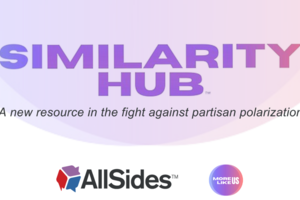Does the New York Times Have a Double Standard When it Comes to Publishing Mass Shooter Manifestos?

For decades, there have been debates on the ethics and dangers of publishing the writings of mass shooters. News outlets have established standards and practices when reporting on both the identities of mass shooters and their manifestos, with some outlets opting not to disclose any personal information or the writings of the shooters, and others disclosing all known information.
There is no clear partisan bias stemming from the decision to disclose or not to disclose the writings of mass shooters specifically, but when outlets are inconsistent with their standards from one shooting to the next, a bias becomes evident.
Such is the case with the New York Times’ (Lean Left bias) coverage of the Nashville mass shooter’s journal, a few pages of which were released online on November 6. When compared to the outlet’s coverage of the Buffalo shooter’s writings, a clear bias emerges.
On March 27, 2023, a shooter entered a private Christian elementary school in Nashville, Tennessee, armed with two assault style weapons and a handgun. The shooter — later identified by police as 28-year-old Audrey Hale — killed three 9-year-old students and three faculty members before being killed by responding police officers.
Following the shooting, investigators found additional weapons and a written manifesto at Hale’s residence. Parents of surviving students reportedly fought against efforts to release Hale’s writings, wary of inflicting further emotional damage on the families involved.
Roughly six months later on Nov. 6, controversial conservative commentator Steven Crowder (Right bias) released three leaked images of Hale’s journal entries.
One photographed journal entry dated February 3, 2023, reads, “Kill those kids! Those crackers. Going to private fancy schools with those fancy kwackis + sports backpacks with their daddies mustangs + convertibles. F**k you little s**ts. I wish to shoot you weak a** d***s w/your mop yellow hair, wanna kill all you little crackers!!! Bunch of little f****ts w/your white privileges f**k you f****ts.”
The New York Times didn’t detail the contents of the Nashville shooter’s journal. It’s unclear whether the Times didn’t gain access to leaked images of the journal, or if it did but chose not to publish them.
Back in 2022, The New York Times did detail the contents of writings by the racially-motivated shooter who killed 10 people and wounded three at a supermarket in Buffalo, New York. The Times said that “Examining the suspect’s words can also help shed light on the origins of bigoted ideas. That is particularly crucial since beliefs like his have moved in recent years from the most remote fringes of right-wing culture into the mainstream.”
By detailing mass shooters' writings in one case and not another, the New York Times shows slant.
The subheadline of the New York Times article following the Nashville leak reads, “The publication of the apparent excerpts by a conservative commentator enraged the parents of surviving students, who have been fighting to keep the writings from ever becoming public.” From the outset, the New York Times frames the story as being about the drama surrounding the release, and parents of shooting survivors fighting it, not the writings or purported motivation of the killer.
In reporting on calls to examine the Nashville shooter's writings, The New York Times again shows slant by ignoring its earlier proclamation of the necessity of such analysis, and attributes this desire only to the right, writing, “Republicans and gun rights groups said it was necessary to understand what had led to the shooting as calls for tightened gun laws grew in the months after the shooting.”
The article doesn’t explicitly take a stance on the value of reporting on the writings of mass shooters. But by not reporting on information that was ostensibly available to the reporter, a conscious decision was made to shield readers from the writings.
The Nashville article does reference the “Columbine effect,” the idea that releasing the manifestos of mass shooters runs the risk of inspiring copycats. The New York Times article on the Buffalo manifesto, however, mentions voices who caution against “giving too much public attention” to the writings of killers, but then argues in favor of it, stating, “Those admonishments, however, need to be balanced against clarifying the important connections among seemingly disparate attacks.”
The Buffalo shooter explicitly stated in his manifesto that he hoped to “encourage further attacks” with his actions, but the New York Times analyst felt it was vital to report on his writings to “help shed light on the origins of bigoted ideas.”
By not reporting on the contents of the released Nashville journal pages, and also including a note on the dangers of doing so, the New York Times slants the story against releasing Hale’s writing and departs from previous coverage on shooter manifestos, which it detailed at length.
The Nashville piece also quotes one of the parents of a Covenant School student, as well as local police, the Nashville metro government, and the shooter's parents (to deny their involvement in the leak) — omitting any comment from Crowder or anyone who supported the publication of the entries. By not quoting any supporters of releasing the entries, the New York Times displayed bias by viewpoint placement.
The New York Times’ decision against reporting on Hale's writings is not consistent with the outlet's past coverage similar incidents.
After examining the writings of both the Nashville shooter and the Buffalo shooter, the differences are stark and apparent. The Buffalo shooter’s motivations, detailed in his manifesto, are ideologically driven and aimed at inciting further violence. The Nashville shooter’s journal entries are scattered expressions of hatred and violence that do not appear to be meant for public view.
The differences are clear when the two writings are compared by the reader, but the New York Times did not give its readers that opportunity.
An outlet is entitled to create and maintain editorial standards, but it should remain consistent to them. By picking and choosing when to shield its readers from hate and when it is “necessary” to expose them to it, the New York Times is not demonstrating a strong belief in the intelligence of its readers.
When people feel an outlet doesn’t trust them with certain information, their trust in that outlet will undoubtedly decay.
Written by Clare Ashcraft, Bridging & Bias Specialist (Center bias) and Isaiah Anthony, Deputy Blog Editor (Center bias).
Reviewed by Henry A. Brechter, Editor-in-chief (Center bias), Julie Mastrine, Director of Marketing and Media Bias Ratings (Lean Right) and Joseph Ratliff, AllSides Content Designer (Lean Left bias).

April 26th, 2024

April 25th, 2024

April 25th, 2024